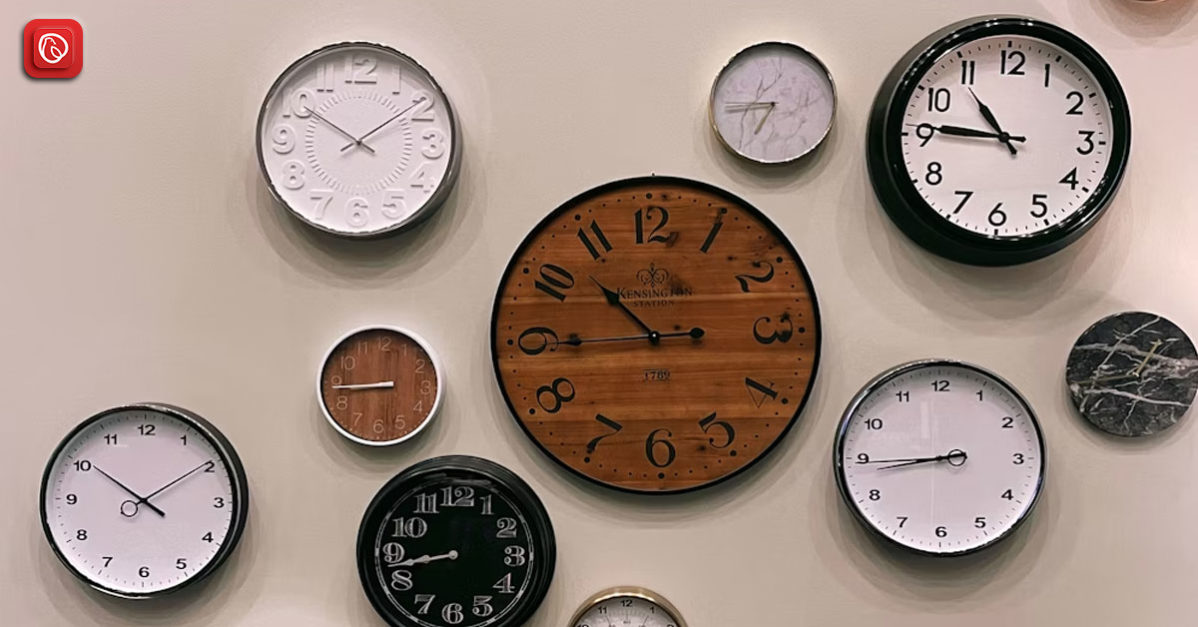In a world dominated by digital displays, the wall clock remains a timeless classic. More than just a way to tell time, wall clocks are functional works of art that add personality and style to any room.
Graana.com has prepared a guide on Wall Clocks including history, designs and more.
History
The history of wall clocks can be traced back to the 14th century when the first mechanical clocks were invented. These early timepieces were large and cumbersome, often housed in elaborate cases. Over time, clocks became smaller and more efficient, eventually making their way onto walls.
Roman And Arabic Numerals On Clocks
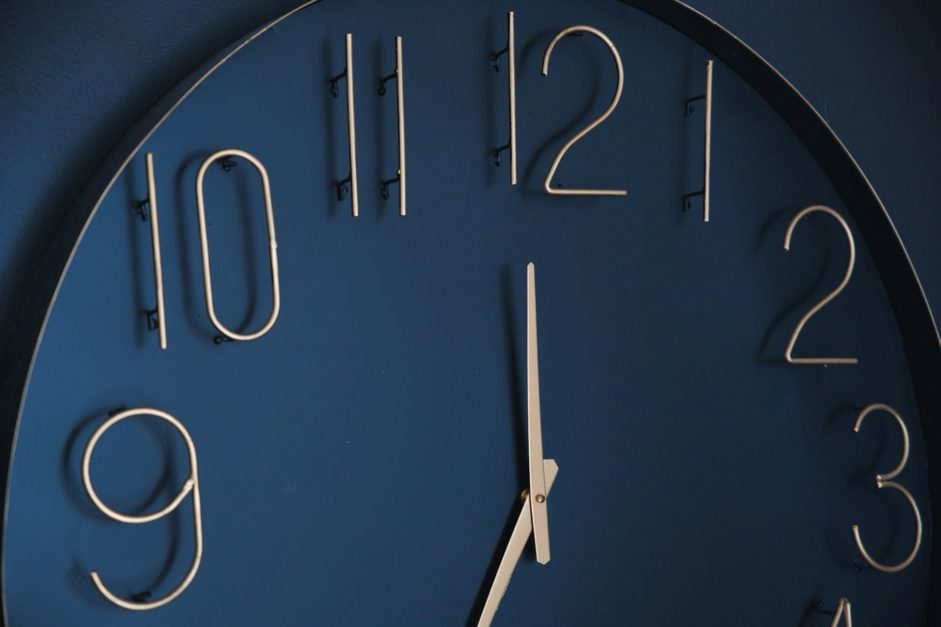
Roman numerals and Arabic numerals are two distinct numerical systems used on clocks to represent the hours. Each system has its own characteristics and brings a unique aesthetic to timepieces. Here are the differences between Roman numerals and Arabic numerals on clocks.
| Aspect | Roman Numerals | Arabic Numerals (Regular Numbers) |
| Representation | Use Roman numerals (I, II, III, IV, V, etc.) | Use regular numbers (1, 2, 3, 4, 5, etc.) |
| Symbolism | Evokes a classic and traditional aesthetic | Considered more modern and contemporary |
| Historical Context | Historically used in ancient Rome and mediaeval Europe | Widely adopted during the Arabic numeral system evolution |
| Readability | May require a bit more effort for quick identification | Instantly recognizable and easier to read |
| Aesthetic Appeal | Adds a touch of elegance and sophistication | Offers a clean and straightforward appearance |
| Popularity | Commonly used in traditional and antique clocks | Widely used in modern clocks and digital displays |
| Adaptability | Works well with ornate and decorative clock designs | Suitable for a variety of clock styles and themes |
| Cultural Influence | Reflects historical and cultural associations with ancient Rome | Represents the evolution of numeral systems across various cultures |
| Versatility | Often associated with classic and vintage clock designs | Adaptable to both traditional and contemporary clock styles |
The Role of Wall Clocks in Home Décor
Wall clocks aren’t just timekeepers; they’re silent-style chameleons. Beyond their practical function, they can transform your space with their visual flair. Placing the right one strategically injects personality and pizazz, drawing the eye and adding a conversation-worthy touch. In open-concept living areas, these mini art pieces can carve out zones and define each space, giving your home a layered, personalised feel.
Design and Varieties
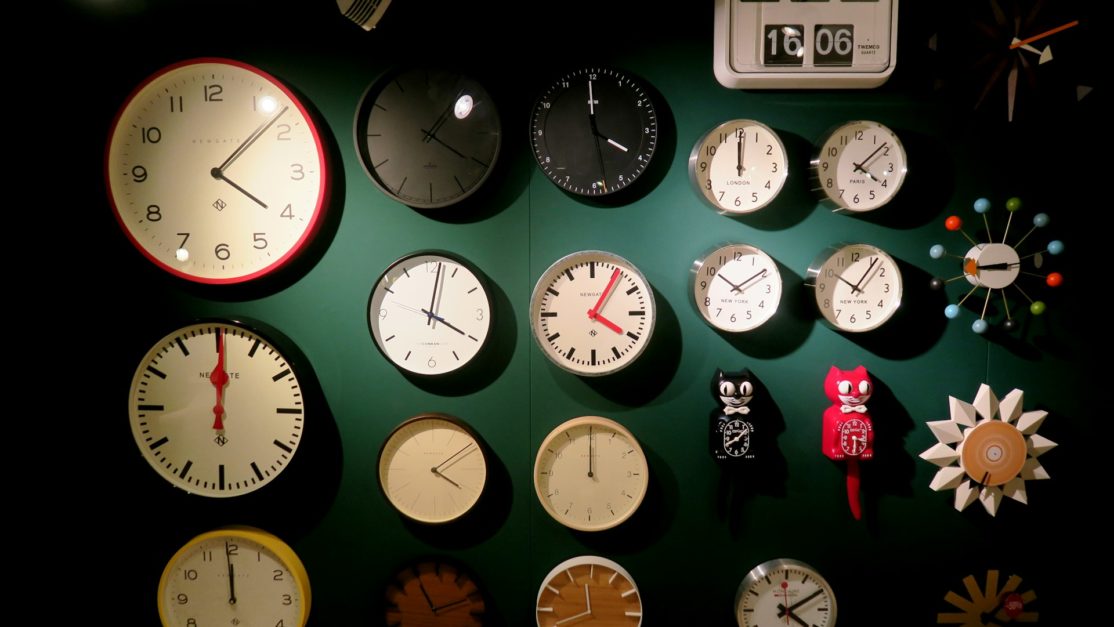
One of the most captivating aspects of wall clocks is their diverse range of clock designs. From antique and vintage styles to modern and minimalist, there is a wall clock to suit every taste and home décor theme. Intricate wooden carvings, sleek metallic finishes, and bold geometric shapes are just a few examples of the design possibilities available. Wall clocks are not merely timekeeping devices; they are pieces of art that contribute to the overall ambience of a room.
Here are some types of clocks you can choose from:
Wooden Wall Clocks
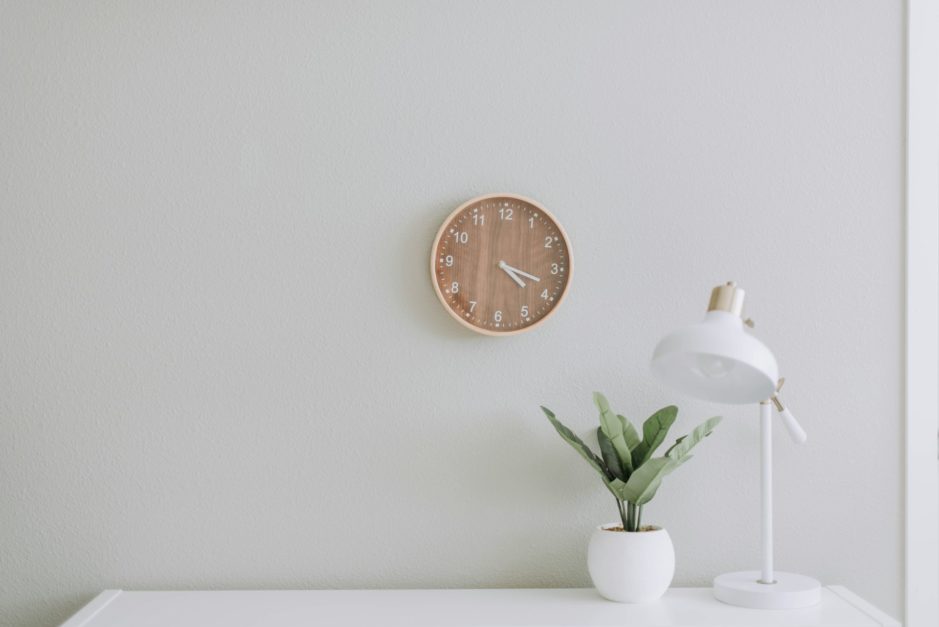
These wall clocks are timeless classics that seamlessly blend functionality with aesthetic appeal. Crafted from various wood types such as oak, walnut, or mahogany, these clocks exude warmth and elegance. The natural grain patterns and earthy tones of wooden clocks make them versatile additions to any room, whether it’s a rustic farmhouse kitchen or a contemporary living room. Their traditional craftsmanship often lends a touch of nostalgia, creating a sense of connection between the past and present.
Digital Wall Clocks
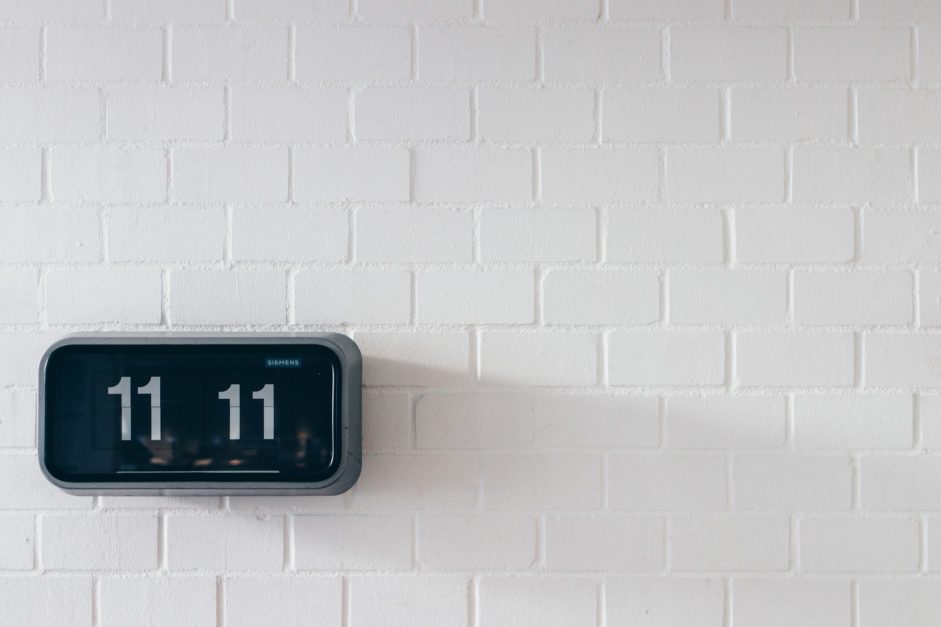
In the fast-paced digital age, digital wall clocks have become essential timekeeping devices. Known for their precision and easy readability, these clocks often feature LED displays that provide a clear view of the time, date, and even temperature.
With sleek designs and customisable settings, digital wall clocks are perfect for modern interiors. Some models even come equipped with additional features such as alarms, timers, and backlighting, making them practical choices for those who value both style and functionality.
3D Wall Clocks

For those looking to make a bold statement, 3D wall clocks offer a unique and artistic approach to timekeeping. These clocks come in a variety of shapes and designs, often featuring visually striking elements that appear to pop out from the wall. From geometric patterns to abstract sculptures, 3D wall clocks can serve as eye-catching focal points in your home. Their avant-garde designs make them popular choices for contemporary and eclectic decor styles.
Personalised Wall Clocks
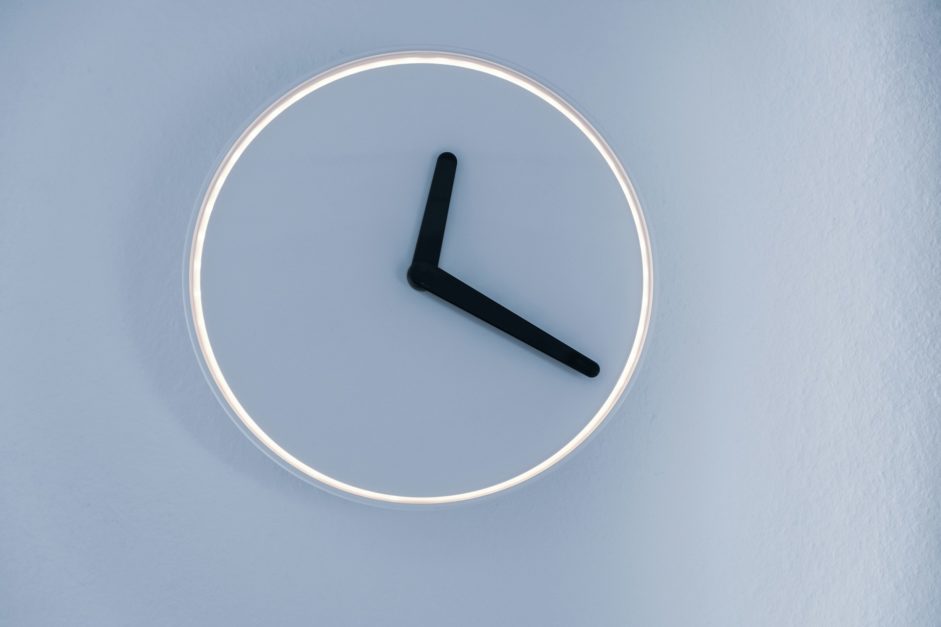
Add a personal touch to your timekeeping with customised or personalised wall clocks. These clocks allow you to showcase your individuality by incorporating elements such as family photos, names, or special dates. Whether you opt for a photo frame clock or a clock with engraved messages, personalised wall clocks become not just timekeepers but also cherished mementoes. Additionally, they make for thoughtful gifts and unique additions to any room, creating a sense of connection and intimacy.
Choosing the Perfect Wall Clock for Your Space
Here are some things you should keep in your mind while choosing a wall clock:
Consider Room Size
The size of the wall clock should be proportionate to the size of the room. A large, bold clock can be a striking centrepiece in a spacious living room, while a smaller clock might be more suitable for a cosy bedroom or kitchen.
Match Existing Décor
Take into account the existing colour scheme, furniture, and overall style of the room. Choose a wall clock that complements or contrasts with the existing décor to create a harmonious look.
Personal Style Preferences
Your personal style matters. Whether you prefer modern, minimalist designs or vintage, ornate styles, select a wall clock that aligns with your aesthetic preferences to make a statement that resonates with you.
Consider Wall Space
Evaluate the available wall space where you intend to hang the clock. Ensure there is enough space around the clock to let it stand out without feeling cramped or overpowering the area.
Functionality
Beyond aesthetics, consider the functionality of the wall clock. Decide whether you prefer a traditional analogue clock, a digital display, or additional features such as silent movements or LED displays based on your practical needs.
Room Purpose
Different rooms have different purposes, and your choice of a wall clock should reflect that. For example, a kitchen might benefit from a practical and easy-to-read clock, while a bedroom could accommodate a more decorative and calming design.
DIY Options
If you enjoy a hands-on approach, consider DIY wall clock projects. Moreover, kits are available for those who want to customise their clocks, incorporating personal touches or unique materials to create a truly individualised piece.
Balance Size and Space
Achieving a balance between the size of the wall clock and the available wall space is crucial. A clock that’s too small may get lost in a large room, while one that’s too large can dominate a smaller space.
Consider Room Lighting
The lighting conditions in the room can affect how the wall clock looks. Consider the room’s natural and artificial lighting to ensure that the clock remains visible and complements the overall ambience.
Think About Theme
If your home has a specific theme or design concept, choose a wall clock that aligns with it. Whether it’s a nautical theme, vintage aesthetic, or a more contemporary look, the clock should seamlessly integrate into the overall theme of the room.
Where to Place Your Wall Clock: Creative Ideas for Every Space
Beyond the practical considerations of visibility and function, the placement of your wall clock can truly elevate your space and add a touch of personality. Here are some creative ideas to get you inspired:
Living Room
If you want to place a wall clock in a living room, you can use these ideas.
- Above the sofa: This classic placement creates a focal point and anchors the seating area.
- Above the fireplace: For a symmetrical and elegant look, balance the clock with artwork or sconces on either side.
- On a gallery wall: Integrate your clock into a curated collection of artwork or photographs for a dynamic and personalised display.
- In a corner: Fill an empty corner with a statement clock for a surprising and eye-catching detail.
Bedroom
If you want to place a clock in a Bedroom, you can follow these ideas.
- Above the headboard: Choose a quiet clock with soft lighting for a calming and unobtrusive presence.
- Opposite the bed: Create a visual balance by placing the clock on the wall across from the bed.
- On a nightstand: A small clock on your nightstand adds a touch of convenience and personality.
- Above the door: This unexpected placement can add a whimsical touch and draw attention to the ceiling.
Kitchen
To place a clock in a kitchen, use the following ideas.
- Above the sink: Keep track of cooking times and add a touch of style with a water-resistant clock.
- On the backsplash: A statement clock can become a focal point in your kitchen, especially if it complements the colour scheme.
- Near the pantry door: This practical placement keeps the clock easily accessible while saving valuable wall space.
- On a floating shelf: Integrate your clock into a decorative shelf display for added visual interest.
Bonus Ideas
- Stack two or three clocks of different sizes and styles for a unique and layered look.
- Use a vintage clock as a decorative accent piece in a hallway or entryway.
- Hang a clock outside your home for a welcoming touch.
- Consider Feng Shui principles when placing your clock, such as avoiding placing it above doors or windows.
Remember, the possibilities are endless! Experiment with different placements and let your creativity guide you. The key is to choose a location that complements your existing décor, enhances the functionality of the space, and reflects your style.
Conclusion
In the world of wall clocks, the options are as diverse as personal tastes. Whether you prefer the classic charm of wooden wall clocks, the modern efficiency of digital timepieces, the artistic flair of 3D designs, or the personal touch of customised clocks, each type offers a unique way to blend functionality with style.
So, as you consider updating your home decor or choosing a meaningful gift, explore the world of wall clocks and find the perfect timepiece that reflects your personality and enhances your living space.
FAQs
Here are some FAQs About Wall Clocks:
Do I need a battery-powered or wind-up clock?
It depends on your needs and preferences. Battery-powered clocks are convenient but require occasional battery changes. Wind-up clocks add a touch of vintage charm but need regular winding.
What size clock should I choose for my space?
A general rule is to choose a clock diameter roughly 1/10th to 1/7th the width of the wall it’s on. Consider the scale of your furniture and the overall feel you want to create.
Is there a good place to hang a clock in the bedroom?
Absolutely! Opt for a silent clock with soft lighting and avoid placing it directly above your head. Consider mounting it above the headboard, opposite the bed, or on a nightstand.
Can I use a wall clock outdoors?
Yes, but choose a weatherproof clock made from durable materials like metal or plastic. Ensure it’s sheltered from direct sunlight and rain.
How do I keep my clock accurate?
Most quartz clocks are very accurate, but you can occasionally check against a radio time signal or online timekeeper. If your clock loses or gains time, there might be an issue with the battery or movement.
Where can I find unique or vintage clocks?
Antique stores, flea markets, online marketplaces, and even yard sales offer a treasure trove of unique and vintage clock finds.
Are there any Feng Shui considerations for clock placement?
In Feng Shui, clocks represent the flow of time and energy. Avoid placing them above doors or windows, as it can symbolise energy leaking out. Opt for positive locations like living room walls or above kitchen counters.
Can I use a wall clock as a decorative piece?
Absolutely! Statement clocks can become focal points in your space, adding personality and style. Choose a design that complements your décor and reflects your taste.
What’s the difference between Roman and Arabic numerals on clocks?
Roman numerals are often used on traditional and vintage clocks, while Arabic numerals are more common in modern and minimalist designs. Choose whichever suits your aesthetic and legibility needs.
Is there a way to silence a ticking clock?
Some clocks have a “silent sweep” mechanism that eliminates the ticking sound. Alternatively, you can try placing a felt pad behind the movement to dampen the sound.
How can I clean my wall clock safely?
Use a soft, dry cloth for gentle dusting. Avoid using harsh chemicals or water, as they can damage the clock face or mechanism.
Can I paint a wall clock?
Yes, but be sure to use appropriate paint for the material and take precautions to avoid damaging the hands or movement. Always test the paint on a small inconspicuous area first.
Is there a clock style that goes well with any décor?
Simple, minimalist clocks with clean lines and neutral colours are versatile and can adapt to various styles. You can always personalise them with decorative elements like frames or surrounding artwork.
What if my clock doesn’t keep time well?
First, check the battery or winding if applicable. If that doesn’t solve the problem, it’s best to consult a clock repair specialist.
Where can I find inspiration for clock placement?
Interior design magazines, online decorating blogs, and social media platforms like Pinterest offer a wealth of ideas for stylish and functional clock placement. Don’t be afraid to experiment and find what works best for your space!
Follow graana blog for more content related to art and design.
